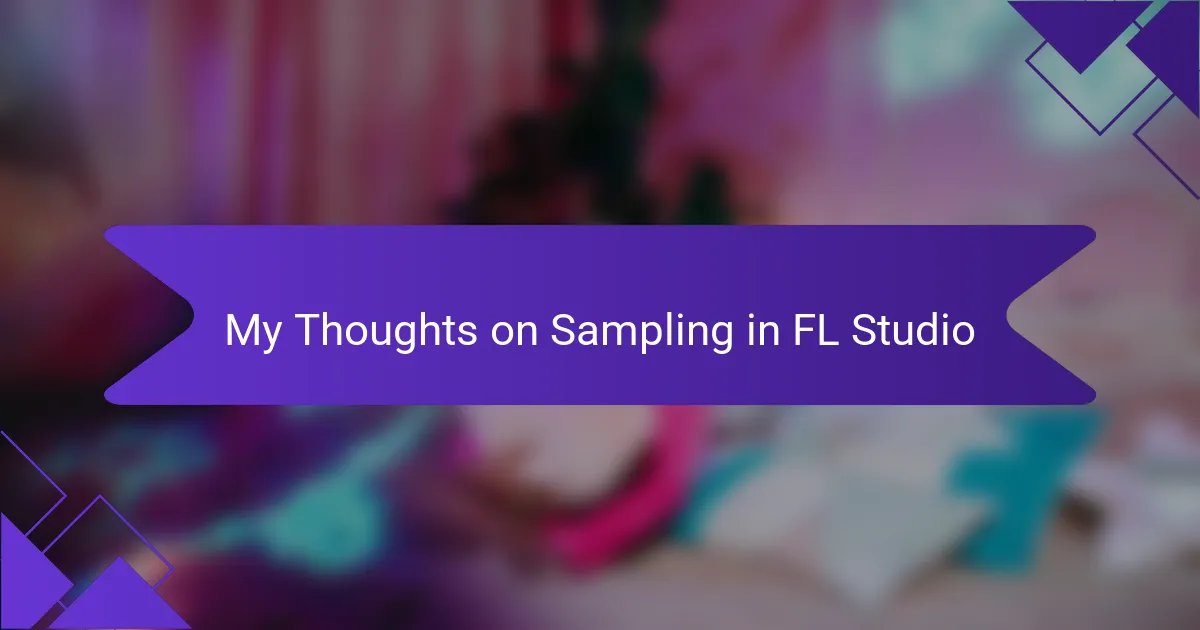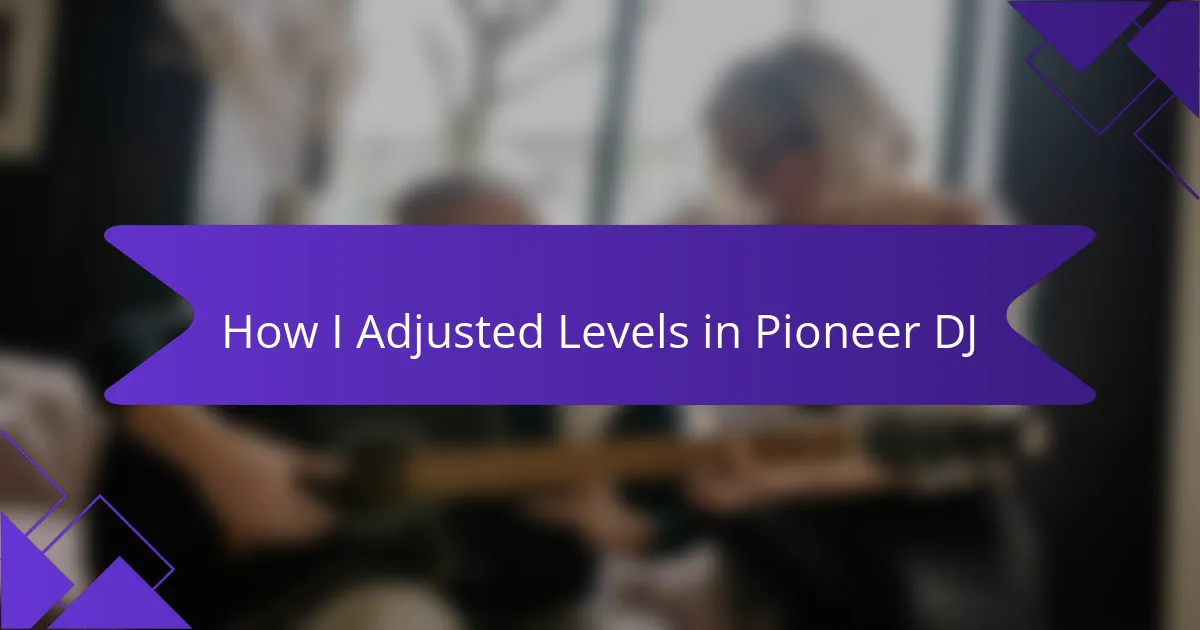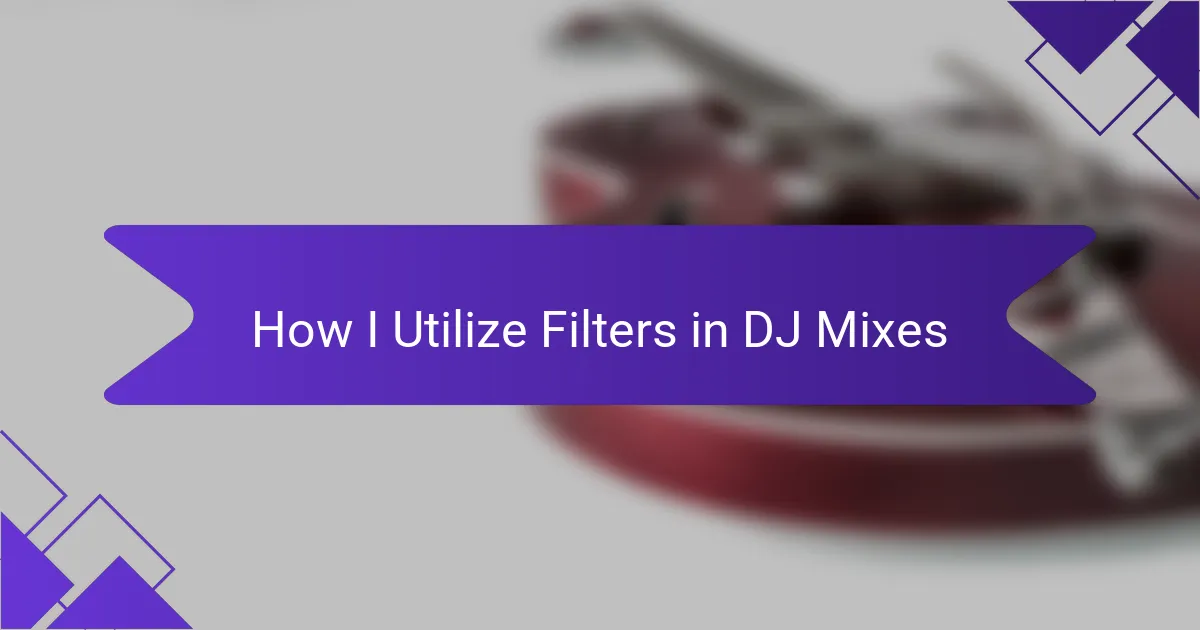Key takeaways
- Mastering EQing is crucial for creating a balanced sound and enhancing the overall energy of a DJ set.
- Every venue has unique acoustics; adapting EQ settings helps tailor the performance for different environments.
- Effective EQing involves trusting your ears, understanding the frequency spectrum, and experimenting with adjustments.
- Use EQ not just to fix problems but as a creative tool to enhance your signature sound and engage the audience.
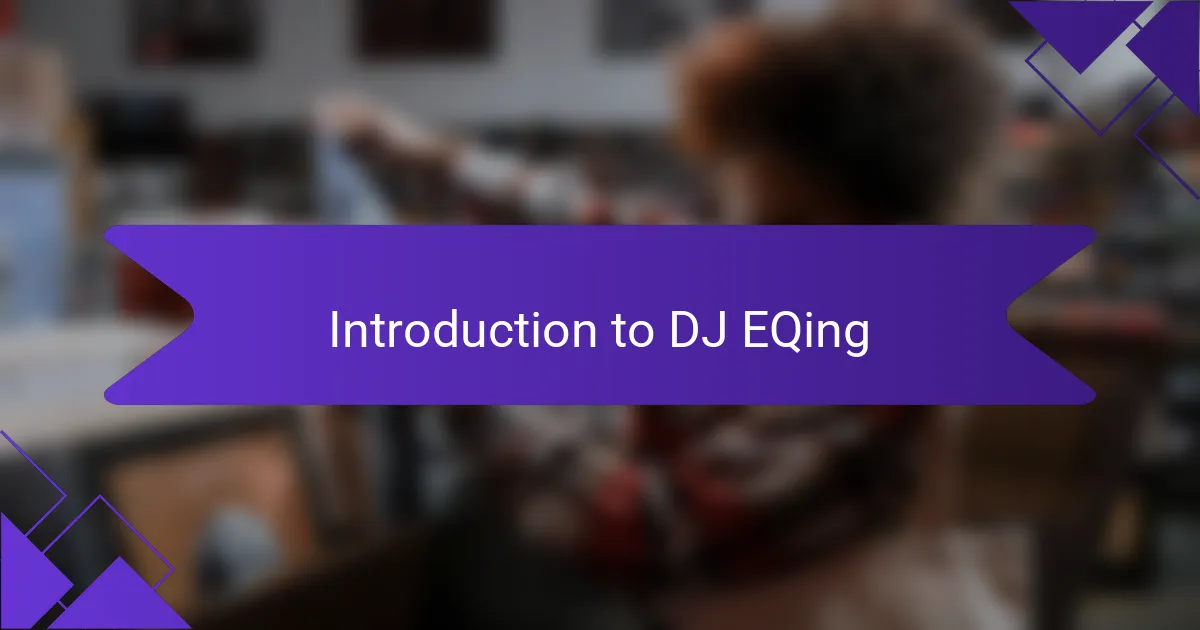
Introduction to DJ EQing
EQing, or equalization, is a fundamental aspect of DJing that directly influences the sound quality during a performance. In my experience, mastering EQing in Serato DJ has transformed my sets. It allows me to create a balanced sound, emphasizing particular frequencies while minimizing others to elevate the energy of the crowd.
Understanding the EQ bands—low, mid, and high—is essential. Each plays a unique role, and I’ve found that fine-tuning these frequencies can make all the difference in how tracks blend together. It’s like painting a beautiful soundscape; every adjustment can either enhance or detract from the overall experience.
Here’s a quick comparison to help clarify the different frequency ranges and their impact on sound:
| Frequency Range | Effect on Sound |
|---|---|
| Low (20-250 Hz) | Provides depth and warmth; too much can cause muddiness. |
| Mid (250-2000 Hz) | Essential for vocal clarity and instrument definition; careful adjustment is key for balance. |
| High (2000-20000 Hz) | Adds brightness and presence; excessive highs can lead to harshness. |

Importance of EQ in DJing
EQing may often be underestimated, but in my experience, it’s a game changer for any DJ set. Have you ever noticed how some tracks can sound muddy while others spark joy in the room? That’s the magic of EQing at work! By carefully balancing low, mid, and high frequencies, I can move the energy of the crowd from a quiet groove to a full-on dance party.
One night, I had a set where a particular track was just not connecting. It wasn’t until I adjusted the mid frequencies that the vocals popped, and suddenly, the vibe shifted. It was as if the music took on a life of its own, pulling everyone onto the dance floor. That moment solidified my belief in the importance of EQ—it can bridge the gap between a good set and an unforgettable experience.
What’s crucial to remember is that every venue has its own acoustics. I’ve learned to experiment with EQ settings each time I perform. Whether it’s a cozy bar or a massive festival stage, adapting my EQ for the environment helps me craft the perfect sound. Isn’t it incredible how something as simple as adjusting frequencies can create such a powerful atmosphere?
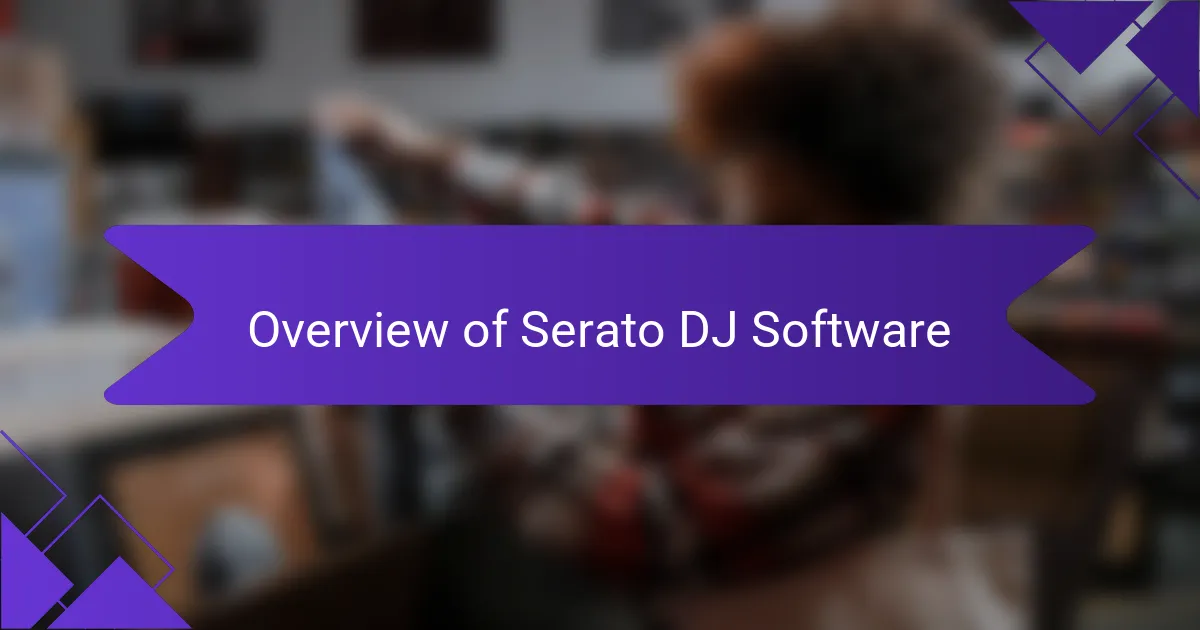
Overview of Serato DJ Software
Serato DJ software has long been my go-to platform for mixing, and it’s easy to see why. The intuitive interface is designed for both beginners and experienced DJs, making it accessible yet powerful. I remember the first time I used it; I was amazed at how effortlessly I could mix tracks and manipulate EQ settings to suit my style.
What I appreciate most is the reliable performance during live sets. The software’s stability has saved me from those nerve-wracking moments when things don’t go as planned. This reliability, combined with its vast library of features, makes Serato an invaluable tool for any DJ.
- User-friendly interface suitable for all skill levels
- Robust audio engine for high-quality sound
- Extensive support for various hardware controllers
- Compatibility with a wide range of plug-ins and effects
- Regular updates that enhance functionality and user experience
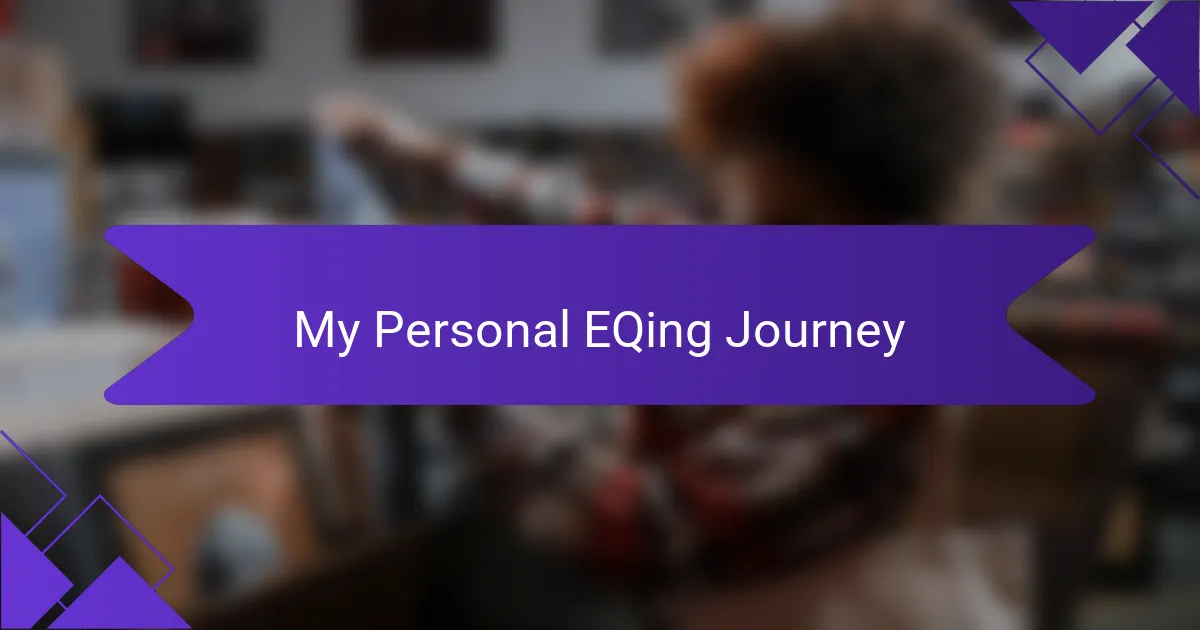
My Personal EQing Journey
When I first started using EQing in Serato DJ, I was amazed at the transformative power it had over my mixes. I remember a night when I was battling with muddy sound in a live gig. I decided to tweak the mid-range frequencies, and suddenly, the music came alive. That moment taught me that proper EQing could not only enhance the sound but also elevate the entire vibe of a party.
As I gained more experience, I learned to think of EQing as an art form rather than a technical necessity. It’s all about creating space for each element in a track. This realization changed the way I approached my sets. Here are some key takeaways from my EQing journey in Serato DJ:
- Always listen to the room acoustics; the environment impacts the sound.
- Use high-pass filters to eliminate unnecessary low-end noise, especially during transitions.
- Pay attention to the track’s key elements and adjust frequencies accordingly.
- Practice adjusting the EQ while mixing to enhance your intuition.
- Don’t hesitate to experiment – some of the best moments happen when you break the ‘rules’!

Techniques in EQing
When I first started using EQing in Serato DJ, I quickly realized how crucial it was for shaping the sound during a mix. There’s something incredibly satisfying about finding the right balance between low, mid, and high frequencies. For instance, I distinctly remember a night when I was playing at a local venue, and after adjusting the mid frequencies, the crowd responded with even more energy. It was a turning point for me; I understood how nuanced EQing could elevate the overall vibe of a set.
One technique I find valuable is the use of a high-pass filter on tracks with excessive low-end mud. This simple adjustment can clear up the mix significantly. Here are some specific techniques I’ve developed over time:
- Start with the low frequencies: Cut unnecessary bass in tracks where it competes with the kick to avoid a muddy sound.
- Use mid-range EQ to bring forward vocals or instrumental solos: It helps them stand out.
- Experiment with high frequencies: A small boost can add brightness and energy, especially during build-ups.
- Always check your EQ adjustments in relation to the overall mix: This ensures a harmonious blend and prevents any one element from overpowering the others.
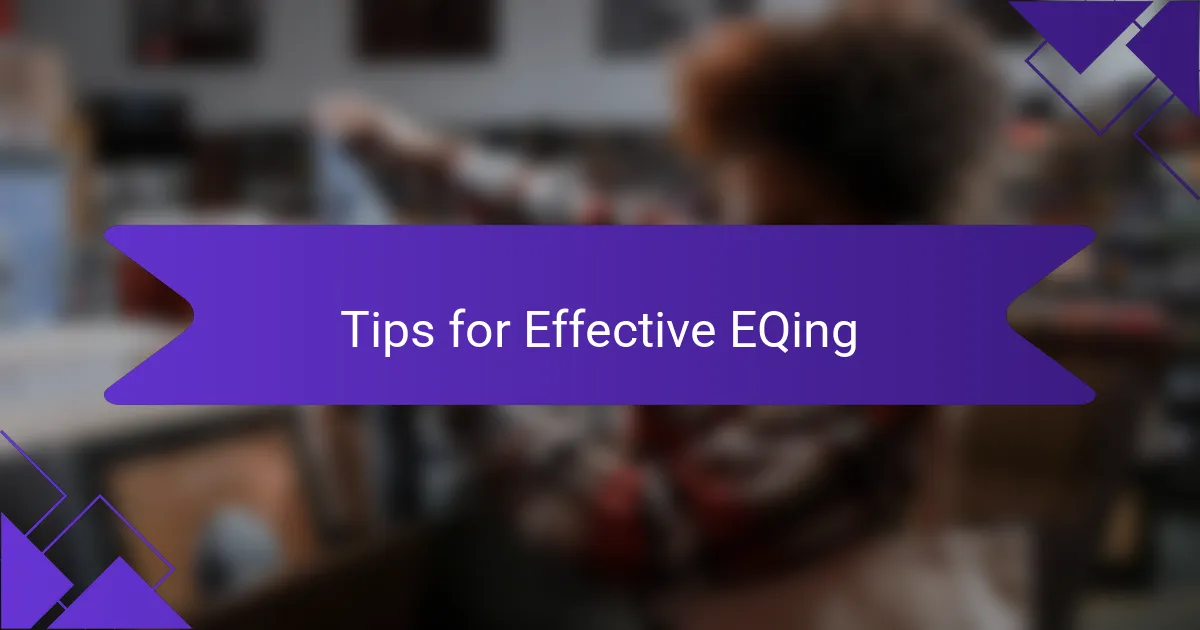
Tips for Effective EQing
When it comes to effective EQing in Serato DJ, one of my best tips is to always trust your ears. I remember a time mixing live when I focused too much on technical specs and not enough on what sounded good in the moment. The crowd’s reaction reminded me to follow my instincts, and that night, subtle adjustments made all the difference.
Another key aspect is understanding the frequency spectrum – know which ranges to boost or cut for various genres. For instance, while mixing house music, I tend to gently lift the bass frequencies for that deep thump but keep the mids clean to ensure clarity. Experimenting with these adjustments can significantly enhance your overall sound.
Here’s a simple comparison of different EQ settings:
| Setting | Effect |
|---|---|
| Bass Boost | Increases low frequencies, adds depth and warmth |
| Mids Cut | Reduces muddiness, allows vocals and instruments to shine |
| Treble Boost | Enhances clarity and definition, especially for highs |

Final Thoughts on EQing in Serato DJ
When I first started using EQing in Serato DJ, it felt like a whole new world opened up for me. Balancing the bass, mid, and treble frequencies not only enhanced the sound quality of my mixes but also allowed me to express my unique style. I still remember the excitement I felt when a crowd reacted positively to a carefully adjusted track; it was a breakthrough moment that solidified my appreciation for EQing.
Utilizing EQing effectively can elevate your performance, but it’s crucial to find what works best for your sound. Here are a few tips I’ve learned along the way:
- Experiment with different EQ settings in various environments to understand how sound changes in each setting.
- Don’t be afraid to cut frequencies; sometimes less is more, and it can clear up the mix.
- Listen to how other DJs EQ their tracks for inspiration, but ensure to develop your signature approach.
- Use EQ adjustments not just for problem-solving but as a creative tool to reimagine the songs in your set.
- Trust your ears—if it sounds good to you, it’s likely to resonate with your audience.
